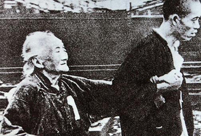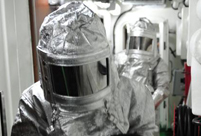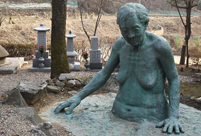 Fighters of Lanzhou MAC in confrontation training
Fighters of Lanzhou MAC in confrontation training
 3D printing to trigger third industrial revolution
3D printing to trigger third industrial revolution
 Top 10 brands that win rich women's hearts
Top 10 brands that win rich women's hearts
 Deng Xiaoping: 'I have a clear conscience all my life'
Deng Xiaoping: 'I have a clear conscience all my life'
 Xi Jinping: 'The people are our strength'
Xi Jinping: 'The people are our strength'
 Amazing cliff diving in cold winter
Amazing cliff diving in cold winter
 Enjoy Sochi 2014 in slow motion
Enjoy Sochi 2014 in slow motion
 University student sentenced to death for poisoning roommate
University student sentenced to death for poisoning roommate
 Chinese lunar New Year celebrated in San Francisco
Chinese lunar New Year celebrated in San Francisco
U.S. researchers said Wednesday they have used gene therapy involving genetically engineered T- cells to successfully decrease the amount of the AIDS virus in several patients taken off antiretroviral drug therapy (ADT) entirely, including one patient whose levels became undetectable.
The study, published in the U.S. journal New England Journal of Medicine, is the first published report of any gene editing approach in humans, the researchers said.
"This study shows that we can safely and effectively engineer an HIV patient's own T cells to mimic a naturally occurring resistance to the virus, infuse those engineered cells, have them persist in the body, and potentially keep viral loads at bay without the use of drugs," senior author Carl June, professor of the University of Pennsylvania, said in a statement.
"This reinforces our belief that modified T cells are the key that could eliminate the need for lifelong ADT and potentially lead to functionally curative approaches for HIV/AIDS," June said.
In their study, the researchers used a technology called the zinc finger nuclease (ZFN) to modify the T cells in 12 patients with the AIDS virus in order to mimic the CCR5-delta-32 mutation that can provide a natural HIV resistance. Only one percent of the general population carries that rare mutation.
They then infused the modified cells known as SB-728-T into two groups of patients, all treated with single infusions of about 10 billion cells, between May 2009 and July 2012.
Six were taken off antiretroviral therapy altogether for up to 12 weeks, beginning four weeks after infusion, while six patients remained on treatment.
The researchers found that the amount of HIV dropped in four patients whose treatment was interrupted for 12 weeks.
One of those patients' viral loads dropped below the limit of detection before reinstitution of ADT and the patient was later found to be "heterozygous" for the CCR5-delta-32 gene mutation, they said.
"This case gives us a better understanding of the mutation and the body's response to the therapy, opening up another door for study," co-author Bruce Levine, associate professor of the University of Pennsylvania said.
Therapies based on the CCR5 mutation have gained steam over the last six years, particularly after a man known as the Berlin Patient was "functionally" cured. Diagnosed with acute myeloid leukemia, the man received a stem cell transplant from a donor who had the CCR5 mutation and has remained off ADT since 2008.
 Chaihe village, pure and peaceful fairyland in snow
Chaihe village, pure and peaceful fairyland in snow Belgians warmly welcome arrival of China's giant pandas
Belgians warmly welcome arrival of China's giant pandas Female marines receive tactical training in NW China
Female marines receive tactical training in NW China Blood memory: Nanjing Massacre in 1937
Blood memory: Nanjing Massacre in 1937 Top 10 pure beauties in showbiz
Top 10 pure beauties in showbiz British WWII veteran: I can't forgive Japan
British WWII veteran: I can't forgive Japan Tongban's dream of prosperity
Tongban's dream of prosperity Chinese frigate Yancheng holds drills in Mediterranean Sea
Chinese frigate Yancheng holds drills in Mediterranean Sea A visit to comfort woman's home in South Korea
A visit to comfort woman's home in South Korea Fairyland? Qingdao in sea of clouds
Fairyland? Qingdao in sea of clouds Top 10 most handsome faces in Asia in 2013
Top 10 most handsome faces in Asia in 2013 Female celebs with beautiful long legs
Female celebs with beautiful long legs Cat 'guardians' in Forbidden City
Cat 'guardians' in Forbidden City Large numbers of ancient coins excavated in Inner Mongolia
Large numbers of ancient coins excavated in Inner Mongolia Leisurely life beneath Zhonggulou, where time travels slower
Leisurely life beneath Zhonggulou, where time travels slowerDay|Week|Month